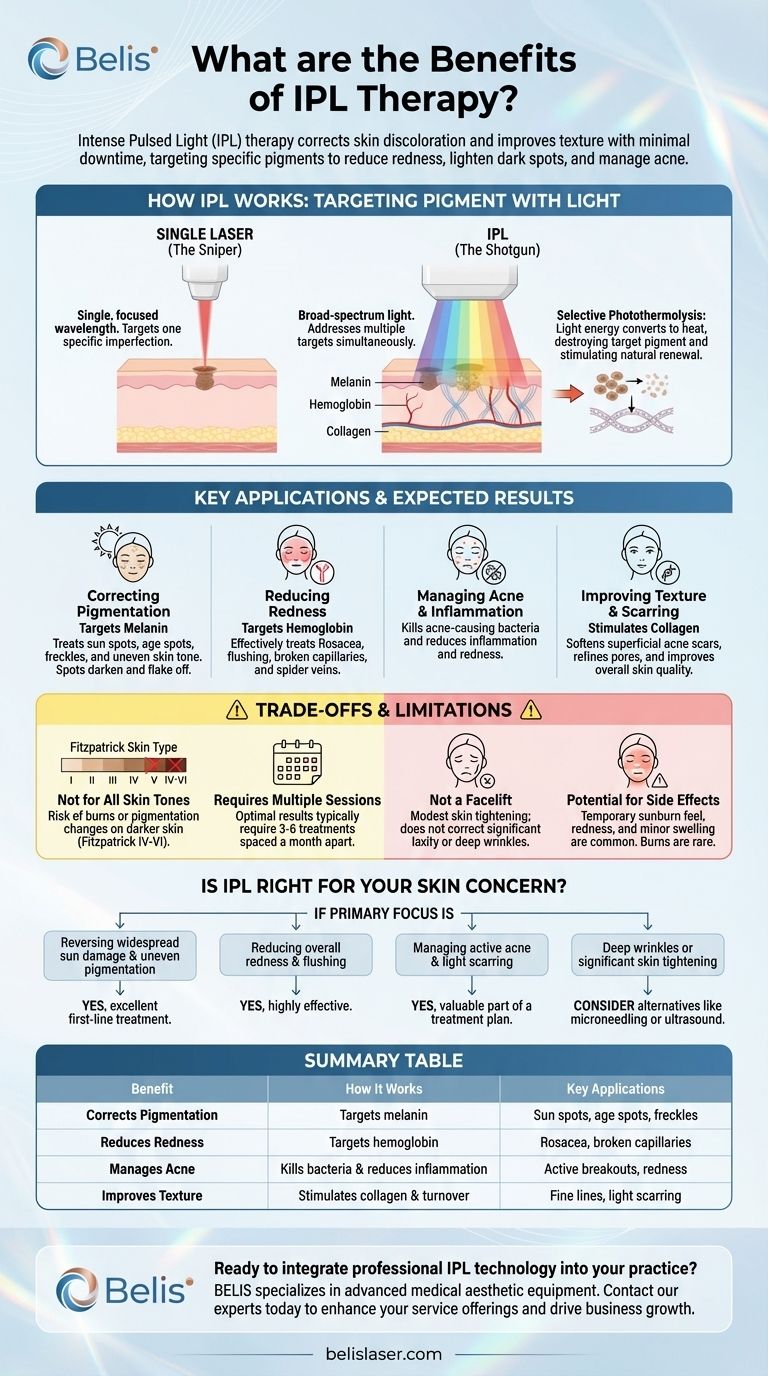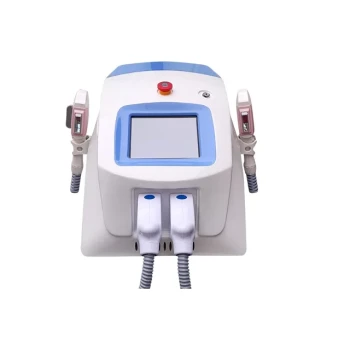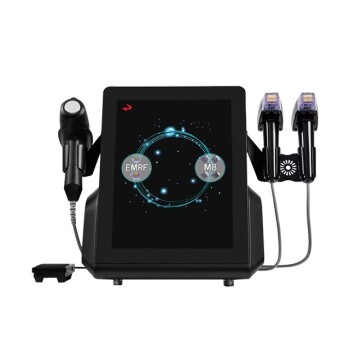In short, the primary benefits of Intense Pulsed Light (IPL) therapy are its ability to correct a wide range of skin discoloration issues and improve overall skin texture with minimal downtime. It effectively treats concerns stemming from sun damage, aging, and inflammation by targeting specific pigments within the skin. As a result, it can simultaneously reduce redness, lighten dark spots, manage acne, and improve the appearance of light scarring.
IPL is not a singular laser but a broad-spectrum light treatment designed to target specific color imperfections in the skin. Its core function is to use light energy to gently destroy unwanted pigment—like brown spots (melanin) or red spots (hemoglobin)—while also stimulating a natural healing response that revitalizes the skin's surface.

How IPL Works: Targeting Pigment with Light
To understand its benefits, you must first understand its mechanism. IPL operates on a principle called selective photothermolysis, which is a technical way of saying that light energy can be used to selectively heat and destroy a target without damaging surrounding tissue.
Broad Spectrum vs. a Single Laser
Unlike a laser, which uses a single, highly focused wavelength of light, an IPL device emits many different wavelengths. Think of a laser as a sniper rifle, targeting one specific thing with high precision. IPL, in contrast, is more like a shotgun, able to address multiple targets over a broader area in a single pass.
This versatility is what allows it to treat different types of discoloration at the same time. Filters are used to narrow the light spectrum to preferentially target either melanin (brown pigment) or hemoglobin (red pigment).
Stimulating Natural Renewal
When the light energy is absorbed by the target pigment, it converts to heat. This heat damages the cells containing the pigment, which are then cleared away by the body’s natural processes. For acne, this heat can also kill harmful bacteria on the skin.
This controlled thermal effect also creates a mild "injury" in the dermis, which triggers the skin’s natural healing response. This encourages the production of new collagen and accelerates cell turnover, which helps shed old layers and gradually improve skin texture and reduce the appearance of scar tissue.
Key Applications and Expected Results
IPL is best understood as a treatment for color and texture correction. It is most effective on fair to light-brown skin tones (Fitzpatrick types I-III).
Correcting Pigmentation Issues
IPL excels at treating superficial pigmentation. The light is absorbed by excess melanin, causing the spots to darken temporarily before flaking off or fading over one to two weeks. This is highly effective for:
- Sun spots and age spots
- Freckles
- General blotchy or uneven skin tone
Reducing Redness and Vascular Lesions
By adjusting the light filter, IPL can target hemoglobin, the red protein in blood cells. This makes it a go-to treatment for conditions involving diffuse redness and visible blood vessels, such as:
- Rosacea and persistent facial flushing
- Broken capillaries (telangiectasias)
- Spider veins
Managing Acne and Inflammation
As noted in the source material, IPL is a useful tool for managing acne. It addresses the condition in two ways: by destroying the acne-causing bacteria on the skin's surface and by reducing the inflammation and redness associated with breakouts.
Improving Skin Texture and Scarring
The collagen stimulation and increased cell turnover promoted by IPL treatments can lead to a noticeable improvement in skin quality. This process gradually helps soften the appearance of superficial acne scars and can refine the look of large pores, resulting in smoother, more luminous skin.
Understanding the Trade-offs and Limitations
No treatment is a universal solution. Being objective about IPL's limitations is critical for setting proper expectations and ensuring safety.
Not Suitable for All Skin Tones
This is the most important safety consideration. Because IPL targets melanin, it can be difficult for the device to distinguish between the pigment in a dark spot and the natural pigment of the skin. Using IPL on darker skin tones (Fitzpatrick types IV-VI) carries a significant risk of causing burns, blisters, or permanent pigmentation changes (hyper- or hypopigmentation).
Requires Multiple Sessions
IPL is not a one-time fix. To achieve optimal results, a series of 3-6 treatments, spaced about a month apart, is typically required. Maintenance sessions may be needed annually to preserve the results.
It Is Not a Facelift
While IPL improves texture and stimulates some collagen, its skin-tightening effects are modest. It primarily works on the skin's surface and is not designed to correct significant skin laxity, jowls, or deep wrinkles.
Potential for Side Effects
Common and temporary side effects include a feeling of a mild sunburn, redness, and minor swelling, which usually resolve within a few hours to a day. More serious side effects, though rare with a qualified provider, can include burns or unwanted pigment changes.
Is IPL the Right Choice for Your Skin?
Your decision should be based on a clear understanding of your primary skin concern and your skin type.
- If your primary focus is reversing widespread sun damage and uneven pigmentation: IPL is an excellent first-line treatment for addressing brown spots, freckles, and general blotchiness on the face, neck, and chest.
- If your primary focus is reducing overall redness and flushing: IPL is highly effective at targeting the superficial blood vessels that cause conditions like rosacea and broken capillaries.
- If your primary focus is managing active acne and light scarring: IPL can be a valuable part of a broader treatment plan by reducing bacteria, calming inflammation, and promoting healing.
- If your primary focus is deep wrinkles or significant skin tightening: You should explore other treatments like microneedling with radiofrequency or ultrasound therapy, as IPL's effect on skin structure is more subtle.
Ultimately, the key is a thorough consultation with a qualified dermatologist or practitioner to align the technology's capabilities with your specific skin health goals.
Summary Table:
| Benefit | How It Works | Key Applications |
|---|---|---|
| Corrects Pigmentation | Targets melanin (brown pigment) | Sun spots, age spots, freckles |
| Reduces Redness | Targets hemoglobin (red pigment) | Rosacea, broken capillaries, flushing |
| Manages Acne | Kills bacteria & reduces inflammation | Active breakouts, post-acne redness |
| Improves Texture | Stimulates collagen & cell turnover | Fine lines, light scarring, pore refinement |
Ready to integrate professional IPL technology into your practice? BELIS specializes in providing advanced medical aesthetic equipment to clinics and premium beauty salons. Our IPL devices are designed for efficacy, safety, and superior patient outcomes. Contact our experts today to discover how our solutions can enhance your service offerings and drive your business growth.
Visual Guide

Related Products
- IPL SHR+Radio frecuency machine
- 4D 12D HIFU Machine Device for Skin Tightening
- Clinic Use IPL SHR ND YAG Laser Hair Removal RF Skin Tightening Machine
- 12D HIFU Machine Device for Facial HIFU Treatment
- 7D 12D 4D HIFU Machine Device
People Also Ask
- Is it safe to use an RF machine at home? How to Use Consumer Devices Safely
- Does IPL hair removal have other benefits? Discover the Skin Rejuvenation Perks
- Is it safe to use RF machine everyday? Avoid These Risks for Optimal Results
- What is the difference between SHR and laser hair removal? Choose the Right Method for You
- How often do you need RF? Achieve Optimal Skin Tightening with the Right Schedule



















